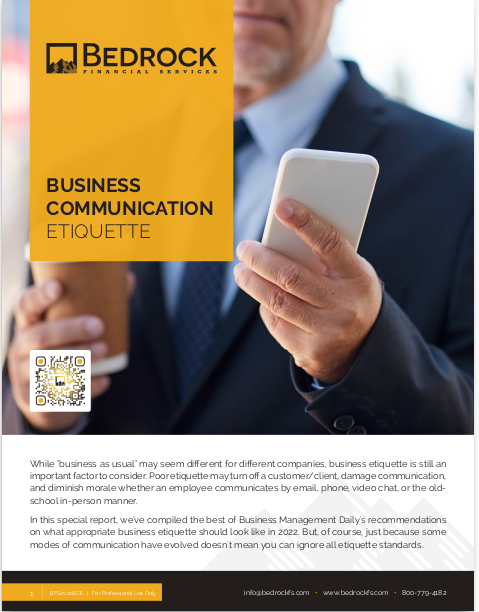Key Takeaways
-
AI tools in 2025 allow you to offload routine tasks like data entry, scheduling, and initial client profiling, freeing your time for deeper conversations and strategic planning.
-
Leveraging AI doesn’t mean replacing the human touch; it means reinforcing it by making space for more meaningful and trust-building interactions with clients.
Why the Human Element Still Matters in 2025
Artificial intelligence is a powerful tool—but you are still the advisor clients choose to trust. In financial services, no amount of automation can replace the emotional intelligence, judgment, and personal connection you bring to the table. What AI can do, however, is help you protect and prioritize that role.
AI systems today are capable of parsing vast amounts of data in seconds, generating personalized reports, responding to client inquiries with natural-sounding language, and even initiating lead-nurturing workflows based on behavioral triggers. But instead of replacing what you do best, these tools should clear your plate of what keeps you from doing it.
The Time Drain That’s Holding You Back
You didn’t enter this profession to spend hours chasing paperwork, manually setting appointments, or updating client records. Yet that’s exactly what many financial professionals still find themselves doing daily.
Now in 2025, AI can handle many of these functions more accurately, more consistently, and much faster. You just need to shift your mindset from doing everything yourself to delegating to smart systems.
Tasks You Can Offload Right Now
-
Appointment scheduling: AI assistants can manage calendars, handle rescheduling, and confirm appointments.
-
Client onboarding: Automated workflows collect KYC data, issue disclosures, and prompt e-signatures without your constant oversight.
-
Document preparation: AI can draft client summaries, financial plans, and proposal templates based on uploaded data.
-
CRM updates: Systems can auto-log interactions and generate reminders without manual entry.
-
Lead scoring: AI tools analyze prospect behaviors across emails, webinars, and website visits to help you focus on the most engaged leads.
Getting More Out of Every Client Conversation
When AI takes over the admin, you get time back. But what you do with that time is where the real opportunity lies.
Rather than rushing from one task to the next, you can now pause and invest in asking better questions. You can connect more deeply with your clients’ values and goals. You can remember what they said last quarter, not because you wrote it down, but because your AI-enhanced CRM reminded you with context-rich notes.
How AI Supports Meaningful Dialogue
-
Pre-meeting insights: Automatically generated summaries give you a clear view of client history, updates, and life events.
-
Conversation prompts: AI can suggest discussion topics based on news alerts or recent portfolio changes.
-
Real-time transcription: With consent, AI can transcribe meetings, flag action items, and auto-populate follow-up emails.
-
Sentiment tracking: AI tools now detect emotional tone in communications, alerting you to possible client concerns.
Keeping Personalization at the Center
AI doesn’t need to turn your practice into a cold, robotic engine. When used correctly, it actually deepens personalization. The key is staying intentional about when to automate and when to humanize.
For example, you can:
-
Let AI draft the first version of a financial plan—but customize it with your own commentary.
-
Use AI to remind you of client birthdays—but write the card yourself.
-
Let AI monitor portfolio performance—but call your client when the results are worth celebrating—or worrying about.
AI should free you up for higher-touch communication, not eliminate it.
What AI Doesn’t Replace
In 2025, the scope of AI is impressive—but it has limits. Here’s what remains squarely in your hands:
-
Complex financial judgment: AI can analyze data but cannot apply personal context or make value-based decisions.
-
Regulatory interpretation: Rules change, and gray areas exist. Human oversight remains essential.
-
Ethical boundaries: AI lacks a moral compass. You bring that to the client relationship.
-
Emotional reassurance: No algorithm can offer empathy when markets drop or life gets hard.
Your presence, your insight, and your care are what clients remember and return for.
Choosing AI Tools That Work For You
You don’t need to adopt everything at once. Start with tools that integrate easily into your workflow. Look for systems that:
-
Are secure and compliant: Data privacy laws are stricter in 2025, so choose AI that meets industry regulations.
-
Offer intuitive interfaces: You should not need a computer science degree to use them.
-
Allow for customization: Flexibility matters—make sure you can tailor workflows to your client base.
-
Provide transparent logic: If AI is recommending something, you should be able to explain why.
Start small, test, and scale as you see results.
Making AI Work for Your Brand
How you use AI is also a reflection of your brand. If clients feel like they’re talking to machines, you’ve gone too far. But if they feel like they’re receiving timely, relevant, and personal attention—you’re doing it right.
Be transparent about your AI use. Let clients know you’re using tools that help you serve them faster and better. Assure them their data is safe, and that you’re still the human behind every recommendation.
Even better, show them how AI benefits them directly:
-
Faster turnaround on requests
-
More frequent touchpoints
-
Fewer errors in documentation
-
Proactive suggestions based on life changes
Building Trust in the Age of Automation
The most important asset you have is trust. Using AI should support, not jeopardize, that trust.
Set boundaries with your automation:
-
Don’t send generic mass emails disguised as personal outreach.
-
Don’t automate investment decisions without client awareness and consent.
-
Don’t rely on AI to respond to emotionally sensitive inquiries.
Use AI to deliver more of what builds trust: accuracy, responsiveness, attentiveness, and personalization.
How Much Time Should You Save?
By mid-2025, most financial professionals using AI report saving between 8 to 15 hours a week on administrative functions alone. That’s nearly two full working days back. If you reinvest that time into client conversations, strategic planning, and education, the impact on your growth can be substantial.
Imagine what you could build in that space.
Elevating Client Experience While Scaling Your Business
AI isn’t just a time-saver—it’s a growth enabler. When you’re no longer bottlenecked by operations, you can:
-
Take on more clients without compromising service quality
-
Expand your offerings into financial wellness, retirement planning, or education
-
Launch webinars, newsletters, or content hubs with AI-generated support
-
Strengthen referral networks by being more present and helpful
Growth doesn’t have to mean burnout. With AI as your assistant, you scale your service—not your stress.
Where It All Comes Together
You don’t have to choose between efficiency and empathy. In fact, 2025 is the year you can finally have both. The smart use of AI allows you to show up fully—because the busywork no longer drags you down.
We believe that human connection should remain at the center of every financial relationship. That’s why at Bedrock Financial Services, we help professionals like you adopt AI tools in ways that actually support trust, growth, and client satisfaction. Sign up with us to explore how our resources, automation strategies, and practice-building insights can help you stay focused on what matters most—your clients.







